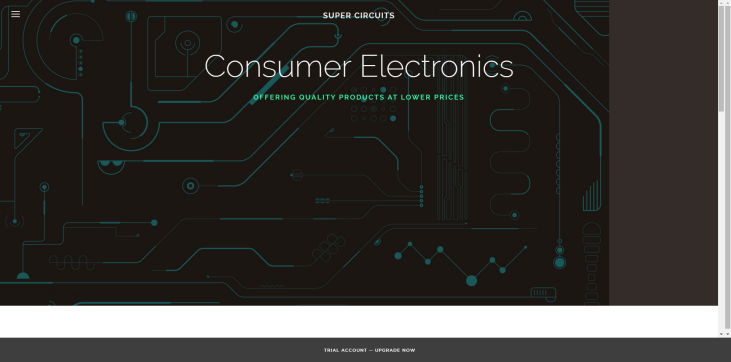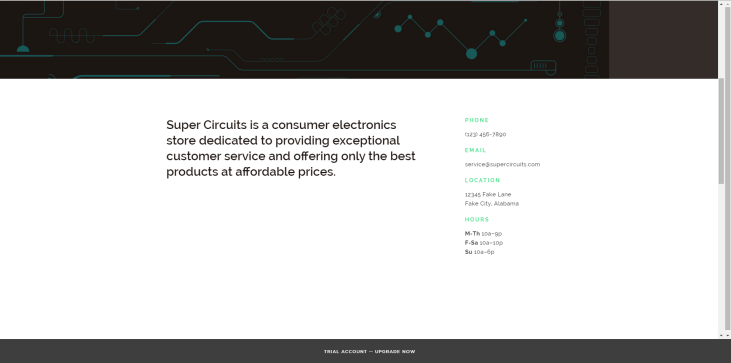What I can do for you as a Digital Marketer
Alas, it is the end of the quarter and the end of my Junior year at Western Washington University. My interest and knowledge of digital marketing has grown immensely because of all of the reading and writing that I have done on related topics. Although I still have much to learn, I feel much more adequately prepared to speak with digital marketing experts, form my own opinions in this realm of knowledge, and possibly even use many of the strategies that I have learned for my own benefit and the benefit of others.
With that being said, based on the knowledge that I have accumulated, here are just a few of the main things that I can do for you as a digital marketer:
Help you optimize your website for search engine results. One of the best ways to drive site traffic is to be easily found on the results page of a search engine. I have discussed many topics in this blog, but SEO is one of the most practical. As a digital marketer, I would first evaluate the content and UI/UX of your website, knowing that high-quality relevant content and a positive user experience is one of the best strategies that can be used to get found. One of these vital components is the relevancy, intuitiveness, and quality of your landing pages. Second, I would examine and make changes to the website’s use of relevant keywords and use of JavaScript, knowing that Google crawls through webpages looking for certain keywords in coding language that it can read, JavaScript not being one of them. Third, I would employ a software program like Google AdWords in order to discover which keywords your website is best getting found for, and to set up a paid search campaign to complement other SEO strategies. All of these components would make it easier for potential customers to find your business offerings, which will increase traffic to your website and hopefully conversions.
Manage your social media campaign. Another important and valuable piece of the digital marketing puzzle is social media. As a digital marketer, I would first start by assessing and modifying the content of your social media posts. As with any medium of marketing communications, relevant content is the foundation to a successful campaign. The content posted on a social media website should be interesting, friendly, and engaging to customers and potential customers. As such, I would make sure that the content being posted matches the persona of the people who would be viewing that content on that particular site, knowing that social media is best utilized with content that shows corporate personality and makes the company relatable to consumers. Second, I would help manage your social media campaign by responding quickly and appropriately to customer inquiries, complaints, and comments, knowing that creating and nurturing company relationships with customers through social media helps cultivate customer loyalty and satisfaction. Third, I would employ some form of social media management software, like Hootsuite, to streamline and optimize the capabilities and effectiveness of your social media campaign. Tools like this can make all the difference in maximizing effectiveness by allowing you to create and time posts across multiple platforms, while also recording important data and reporting on the performance of your campaign. That brings me to the next point…
Evaluate campaign performance. One of the most important pieces of any campaign is the ability to measure its effectiveness. As a digital marketer, I would use all of the tools at my disposal to evaluate and understand the performance of your digital marketing campaign so that the steps towards optimization can be made. I would use my knowledge of tools such as Google Analytics and Google AdWords to determine what areas of digital should be improved and then use my knowledge of digital marketing best practices to help improve those areas to the best of my ability. One helpful tool for evaluating the effectiveness of a web page is A/B testing and I would utilize this tool in attempting to improve the UI of your website and its landing pages. The ability to identifying patterns and ask the right questions is an important characteristic for any analyst to have, and I would do my best use these characteristics in evaluating and continuously improving the performance of all areas of your digital marketing campaign.
Blog Performance
Because digital marketing is essentially about driving site traffic and conversions, it would only be appropriate for me to evaluate the traffic (or lack thereof) that I have generated on this blog site. Although I was not actively seeking to accumulate views and visitors, I am rather curious to see how my blog performed at doing so with little effort on my part. Ladies and gentlemen, the results are in! Across my blog I wrote a total of 13,799 words and received 105 views, 38 visitors, and obtained one follower. My most viewed blog post was the one that I create about A/B Testing, and my second most viewed post was on SEO. Something that certainly surprised me was that someone was directed to my UI & UX blog post from an organic search result! Compared with most blogs on the web, these stats are rather pitiful, but I was happy to see that I was able to get as many views as I did. If I were truly trying to drive traffic to my website, I should probably go meta and use all of the different strategies and advice that I have given in this blog. Then I would be able to show that not only do I possess knowledge of digital marketing, but that I also know how to translate that knowledge into action.








